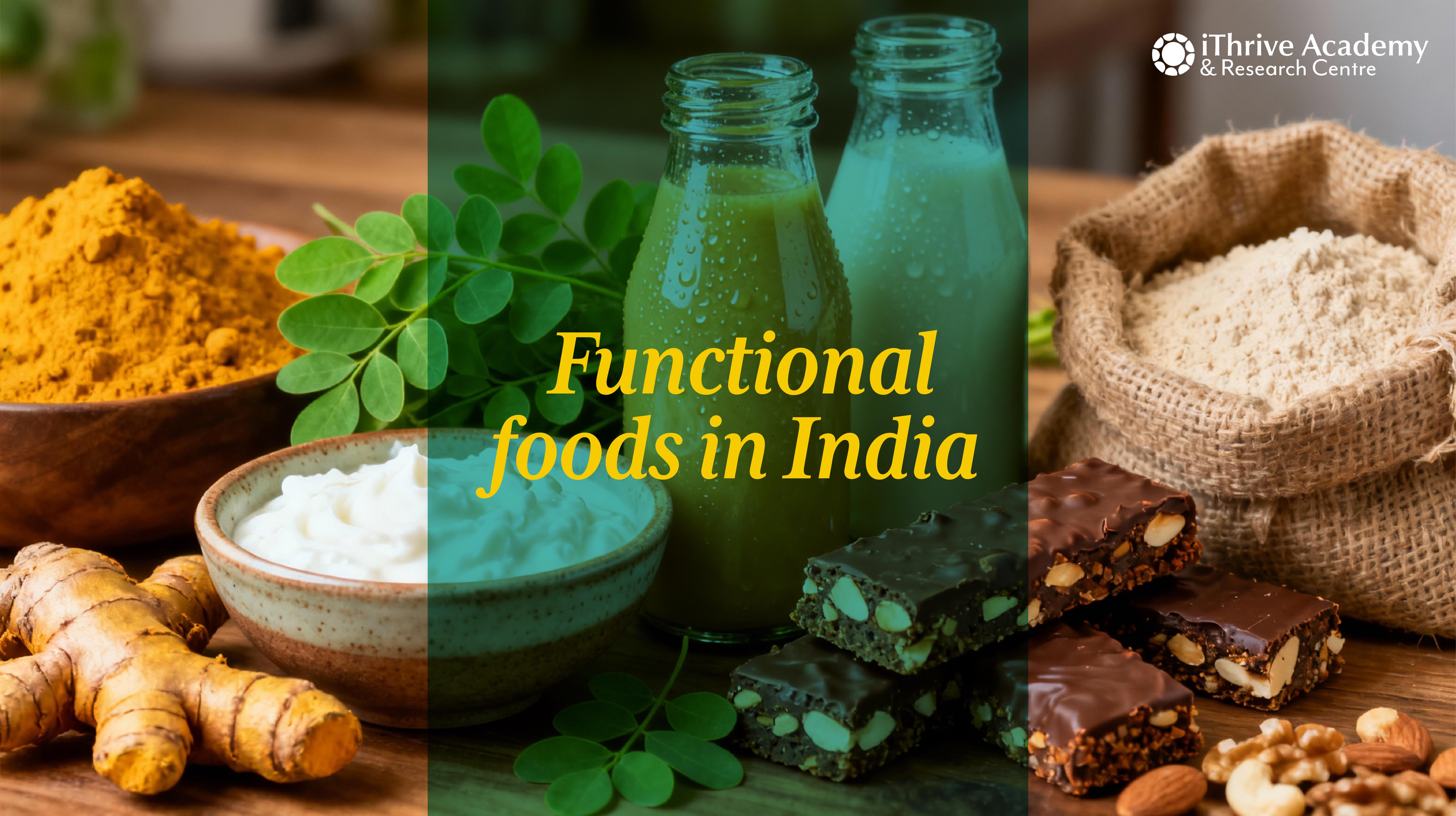Introduction - why your plate matters as much as your lotion
You pat on yet another cream, hoping today will be the day your sensitive skin stops burning, itching, or flushing bright red. But what if the real fix isn’t in the bathroom cabinet at all? For many of us, the biggest trigger for irritated, inflammation‑prone skin is hiding in plain sight, that is our everyday meals. Ultra‑processed snacks, sugary drinks, and fried take‑aways can turn your skin into a battleground, while the right anti-inflammatory foods calm it from the inside out.
In this blog, we’ll explore how an anti‑inflammatory diet acts like internal and secret skincare, healing from inside out. You’ll discover which foods soothe your glow, which inflammatory foods sabotage, how the gut‑skin axis links breakfast to break‑outs, and a simple anti-inflammatory diet meal plan that doubles as a beauty routine. Let’s go beyond surface care and nourish your body to genuinely soothe your skin.
1. How Food Talks to Your Skin (and Sometimes Shouts)
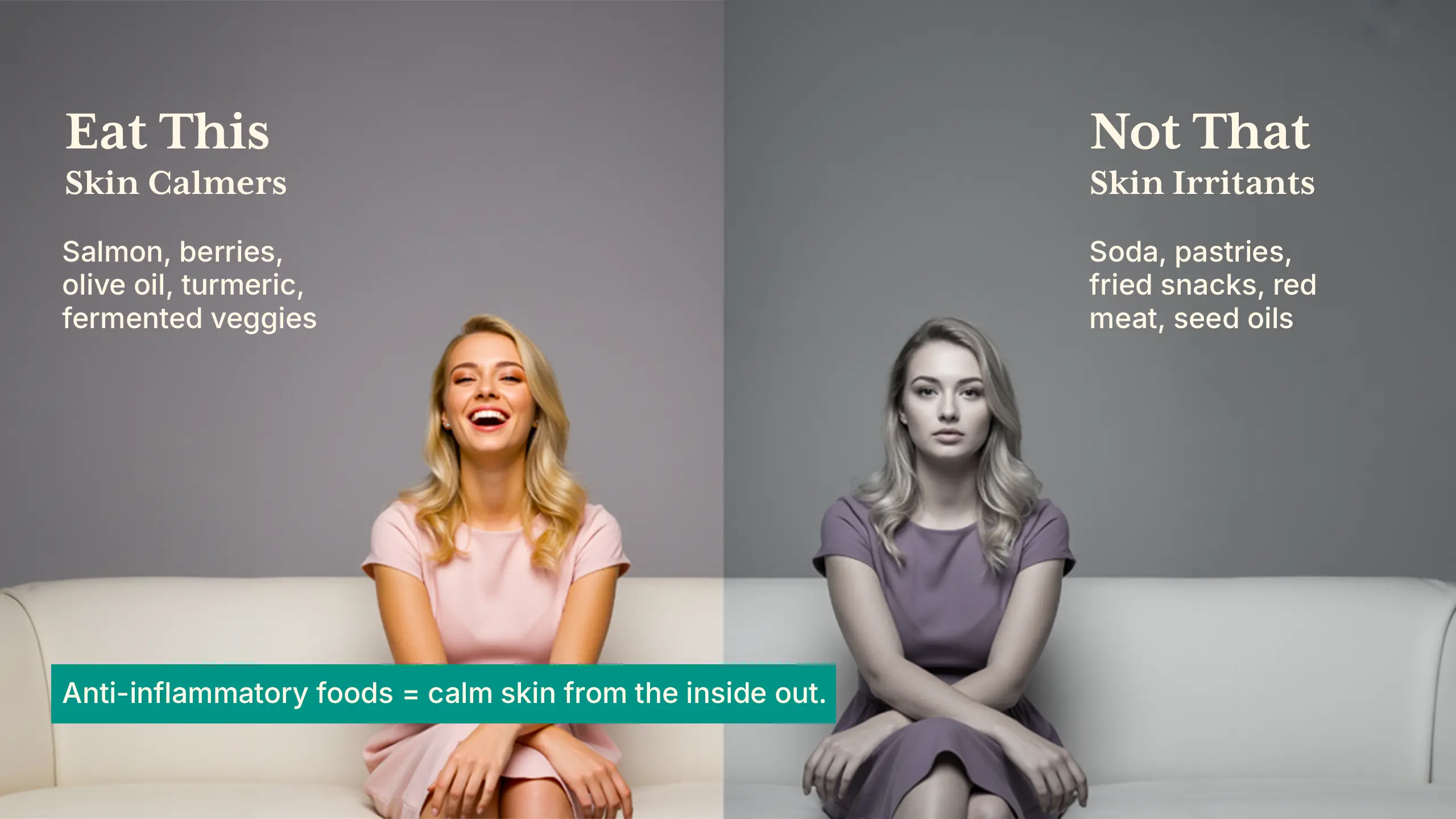
1.1 The gut‑skin axis explained
Your digestive tract and your dermis are constantly chatting via hormones, immune messengers, and the microbiome. When the gut barrier gets “leaky,” inflammatory molecules seep into the bloodstream, then surface as rashes, rosacea, or eczema flares - classic signs of sensitive skin. Recent reviews confirm that an imbalanced gut microbiota is a driver of atopic dermatitis and other inflammatory skin disorders.
1.2 The Dietary Inflammatory Index (DII)
Studies rank foods on how strongly they trigger or tame inflammation.1 Diets scoring high on the DII, which are heavy in sugar, refined grains, processed meats, and seed‑oil‑fried snacks correlate with a higher prevalence of dermatitis and even all‑cause mortality in people with chronic skin disease. Pro Tip: That daily dose of junk food isn't just triggering flare-ups—it’s silently shaving years off your healthspan, one bite at a time.
1.3 Nutrients that turn the flame down
- Omega‑3 fats such as salmon, sardines, walnuts and mackerel down‑regulate the same inflammatory pathways driving eczema and psoriasis. A 2024 pediatric trial found omega‑3 plus vitamin D cut atopic‑dermatitis severity scores by nearly 30 %.2
- Polyphenols in berries, green tea, and turmeric act as antioxidant fire‑extinguishers, protecting collagen and calming flares.
- Fermented foods such as sauerkraut, coconut water kefir, idli, and kanji feed gut microbes that make short‑chain fatty acids - tiny molecules with big anti‑inflammatory power.
- High‑fiber foods keep the microbiome diverse and the gut barrier tight, lowering systemic inflammation.
1.4 When Lotions Backfire: Inflammaging, Collagen & Skin Truths
We often assume that slathering on moisturizers or serums will fix the problem - but not all topicals are created equal. Many off-the-shelf products are loaded with synthetic fragrances, alcohols, parabens, and petroleum-derived compounds that may feel soothing for a moment, but quietly irritate the skin barrier over time. This constant low-grade inflammation from topical products is one of the drivers of inflammaging - a term used to describe how chronic inflammation speeds up skin aging from within and outside.
And here's where food becomes your skin’s best long-term ally. Collagen which is the structural protein responsible for firmness and elasticity naturally declines with age and inflammation. But here’s the catch: collagen creams don’t actually deliver collagen to your skin. Collagen molecules are too large to penetrate; what your body really needs is the raw material to make its own. That’s where nutrients like glycine, proline, vitamin C, zinc, and sulfur-rich foods come in. A food-first approach (rich in bone broth, amla, citrus, sesame seeds, and lentils) helps replenish what inflammation steals, and restores what no lotion can fake.
2. Your Anti‑Inflammatory Foods Playbook
2.1 Stock up on the “skin‑calm nine”
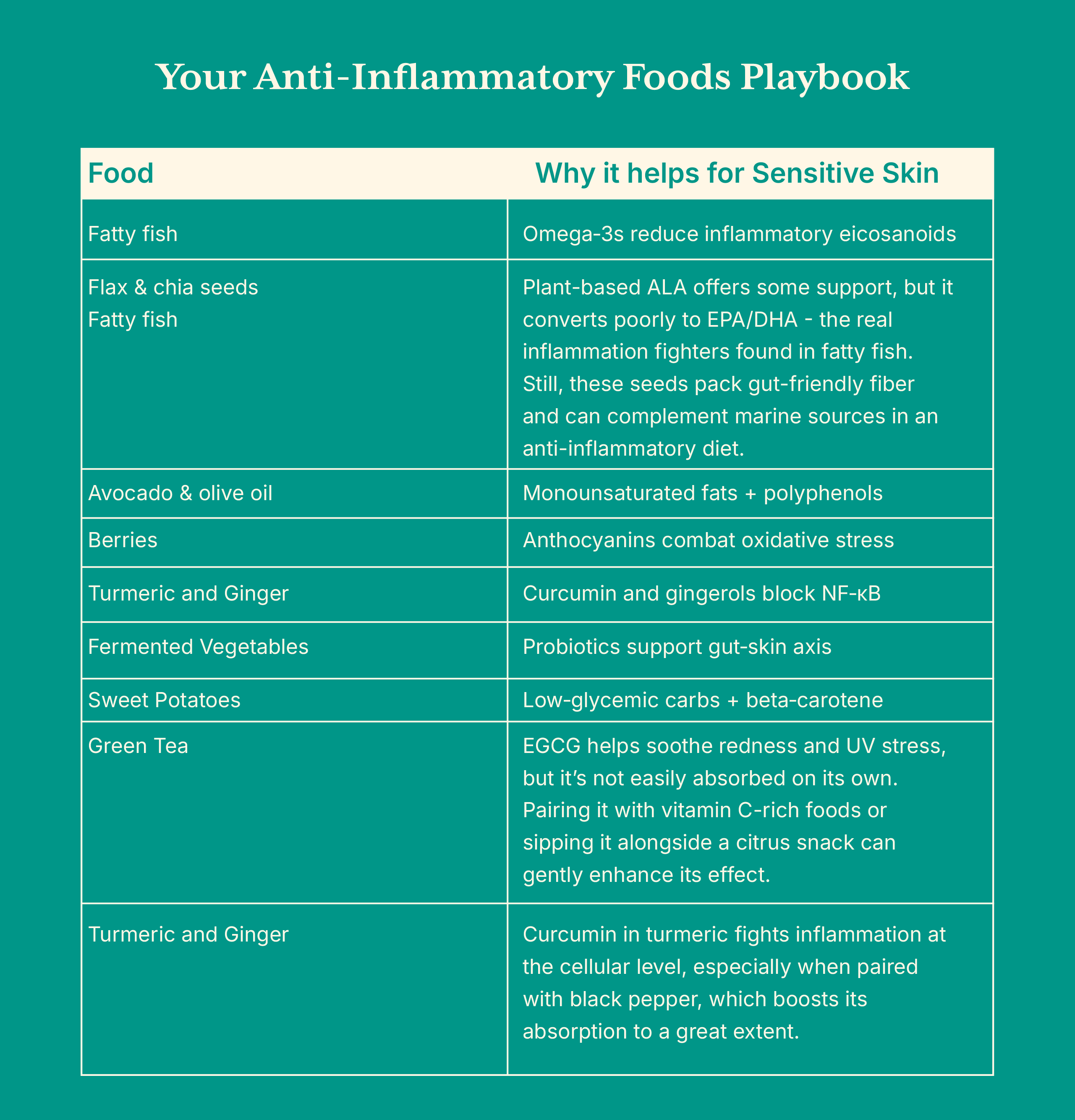
2.2 Pare back these inflammatory foods
- Sugary drinks, pastries, candy bars
- White bread, instant noodles, fries
- Processed meats & excess red meat
- Industrial seed oil snacks (chips, crackers)
- Heavy alcohol binges
These items spike insulin, free radicals, and pro‑inflammatory cytokines - exactly what anti-inflammatory diets try to avoid.
3. A 1‑Day Anti‑Inflammatory Diet Meal Plan
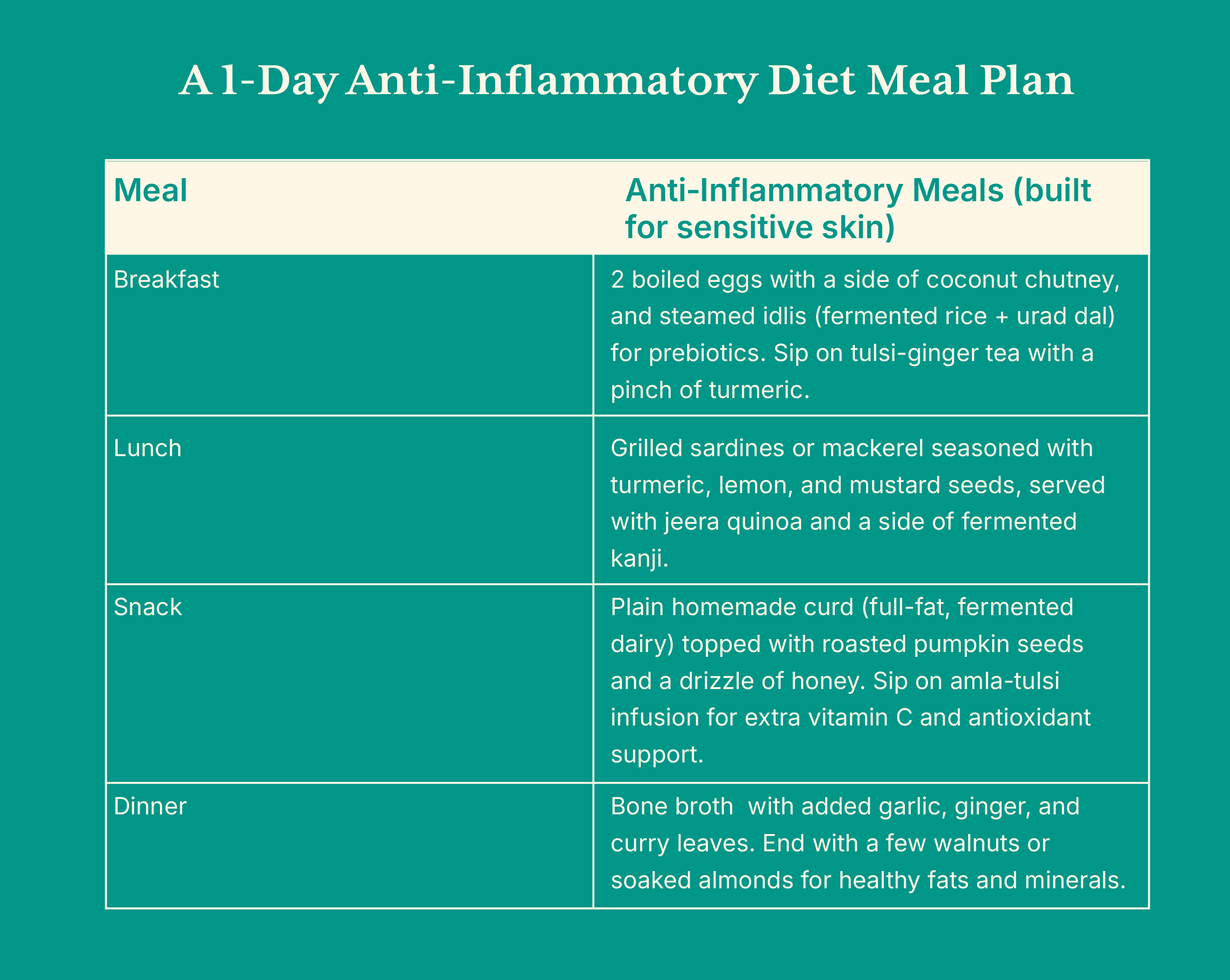
Every bite hits the trifecta: fiber for the gut, healthy fats for cell membranes, and antioxidants for the skin barrier. This is exactly what an anti-inflammatory diet meal plan should deliver.
4. iThrive Academy: Where Food Meets Functional Science And Real Change Begins

So, what if you didn’t just follow an anti-inflammatory diet, but understood why it works, how to personalize it, and when to use it to actually help someone heal?
That’s exactly what we teach at iThrive Academy, because we believe food isn’t just fuel, rather it’s information. And when it comes to something as misunderstood as sensitive, inflammation-prone skin, surface fixes only scratch the surface.
We go deeper.
4.1 Empower: Learn with Clarity, Heal with Confidence
At iThrive Academy, we don’t just teach facts, we also equip you with real tools, evidence-based frameworks, and the clarity to take charge of your own health and support others. Whether you’re struggling with skin issues yourself, or working with clients who are, you’ll leave with the confidence to map out nutrition strategies that truly work.
4.2 Pioneering: Leading the Shift to Root-Cause, Science-Backed Healing
We’re not here to hand you outdated diet rules or generic food charts. You’ll unlearn the conventional, and relearn through the lens of functional medicine - a root-cause, science-driven approach that looks beyond symptoms to what’s really going on inside the body. You’ll learn how inflammation starts, how to track it through symptoms and labs, and how to respond with precision nutrition that promotes deep, lasting skin repair.
4.3 Transform: Become a Practitioner Who Leads Real Change
This is where knowledge becomes transformation. Our programs aren’t just about passing exams, they're also about changing lives. You'll be empowered to design personalized anti-inflammatory diet protocols, support healing at the root level, and walk alongside others on their wellness journey. From friends with eczema to clients with rosacea or autoimmune flares, you'll become someone who doesn’t just know what to do, you’ll also know how to lead and inspire meaningful change.
Through programs like our iThrive Certified Functional Nutrition course (iCFN) and specialized short courses, we’re not just building nutritionists, rather we’re shaping the next generation of healing practitioners.
If you’re ready to go beyond food fads and really understand how to use food as medicine, especially for inflammatory conditions of the skin, this is where your journey starts.
Welcome to iThrive Academy. Where healing begins with knowledge, but doesn’t end there.
5. Five Practical Tips for Real‑Life Success
- Swap, don’t slash. Replace packed fruits juices with fresh fruits, or fries with roasted sweet‑potato wedges, making low inflammation diet swaps sustainable.
- Spice it up. Add ½ tsp turmeric or ginger to soups and teas - tiny habit, but big anti‑inflammatory boost.
- Batch‑cook basics. Pre‑roast salmon, quinoa, and veggies on Sunday so week‑night anti‑inflammatory meals are grab‑and‑go.
- Track your triggers. Keep a three‑week food‑skin diary tracking things like flares after dairy or irritation from processed foods - it helps you quickly spot what’s triggering your skin.
- Hydrate with purpose. Ditch sugary drinks and hydrate with anti-inflammatory infusions like cucumber-mint water, tulsi tea, or fennel-seed water. These not only support digestion and detox but also calm internal heat. Small sips, big skin wins.
Final Thoughts
Give your lotion a helping hand: feed your skin from within with colorful, omega‑3‑rich, fiber‑packed plates. When you treat meals like medicine and cut the inflammatory noise, sensitive skin finally gets a chance to settle into calm. Want the skills to tailor these anti‑inflammatory diets for every client or for yourself? Join iThrive Academy and turn food into skincare with science‑backed confidence.



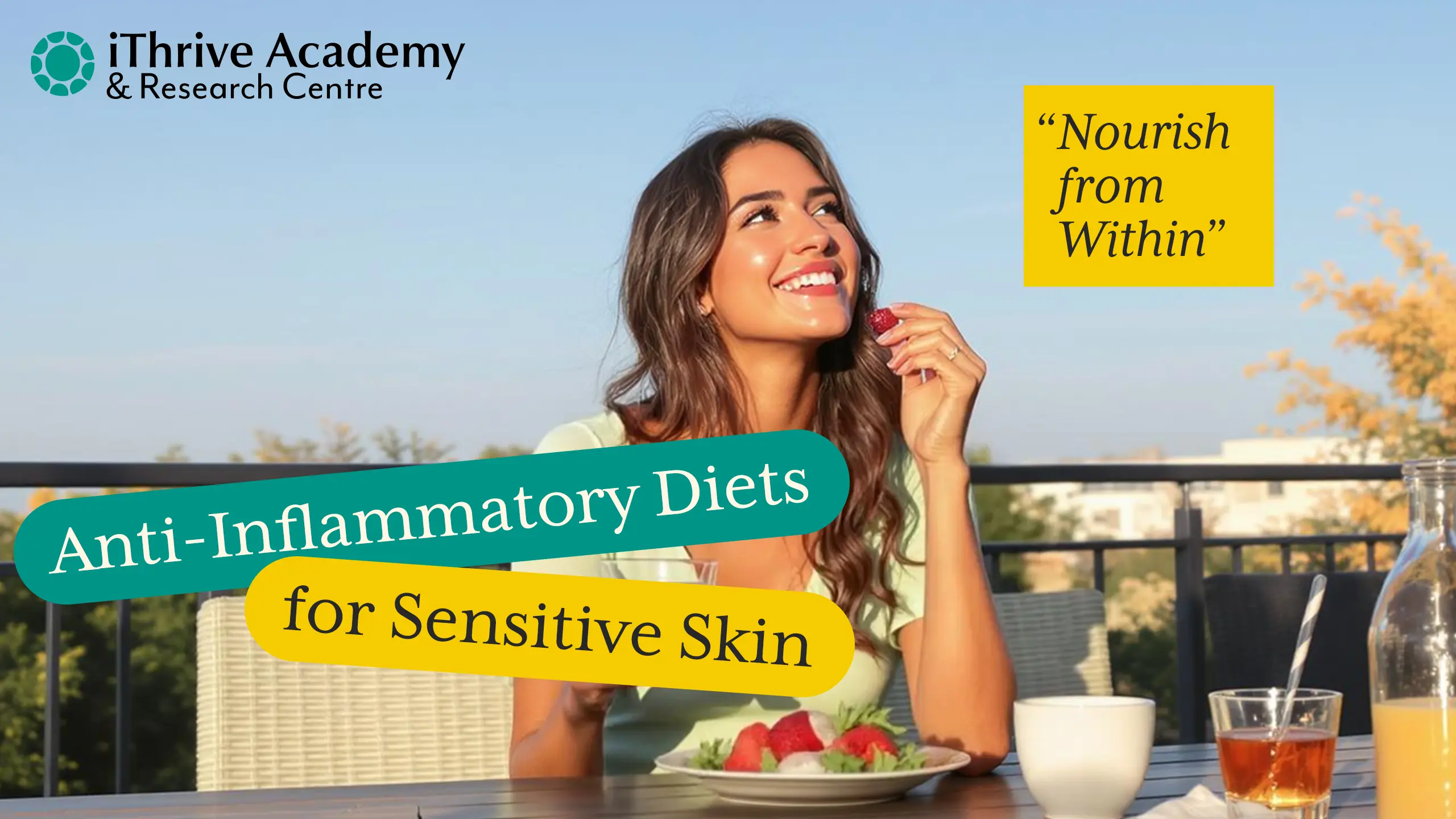


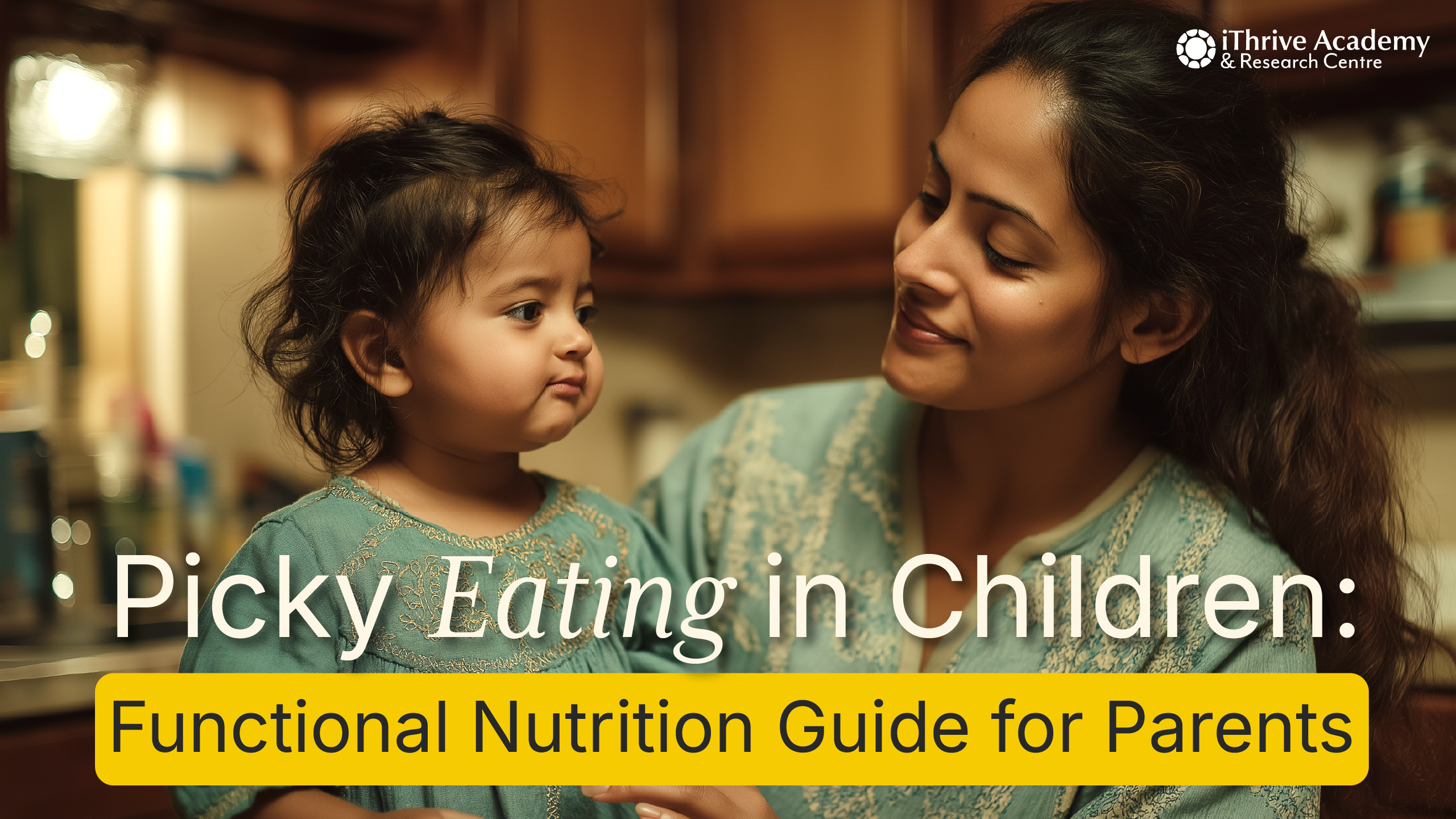


.jpg)



